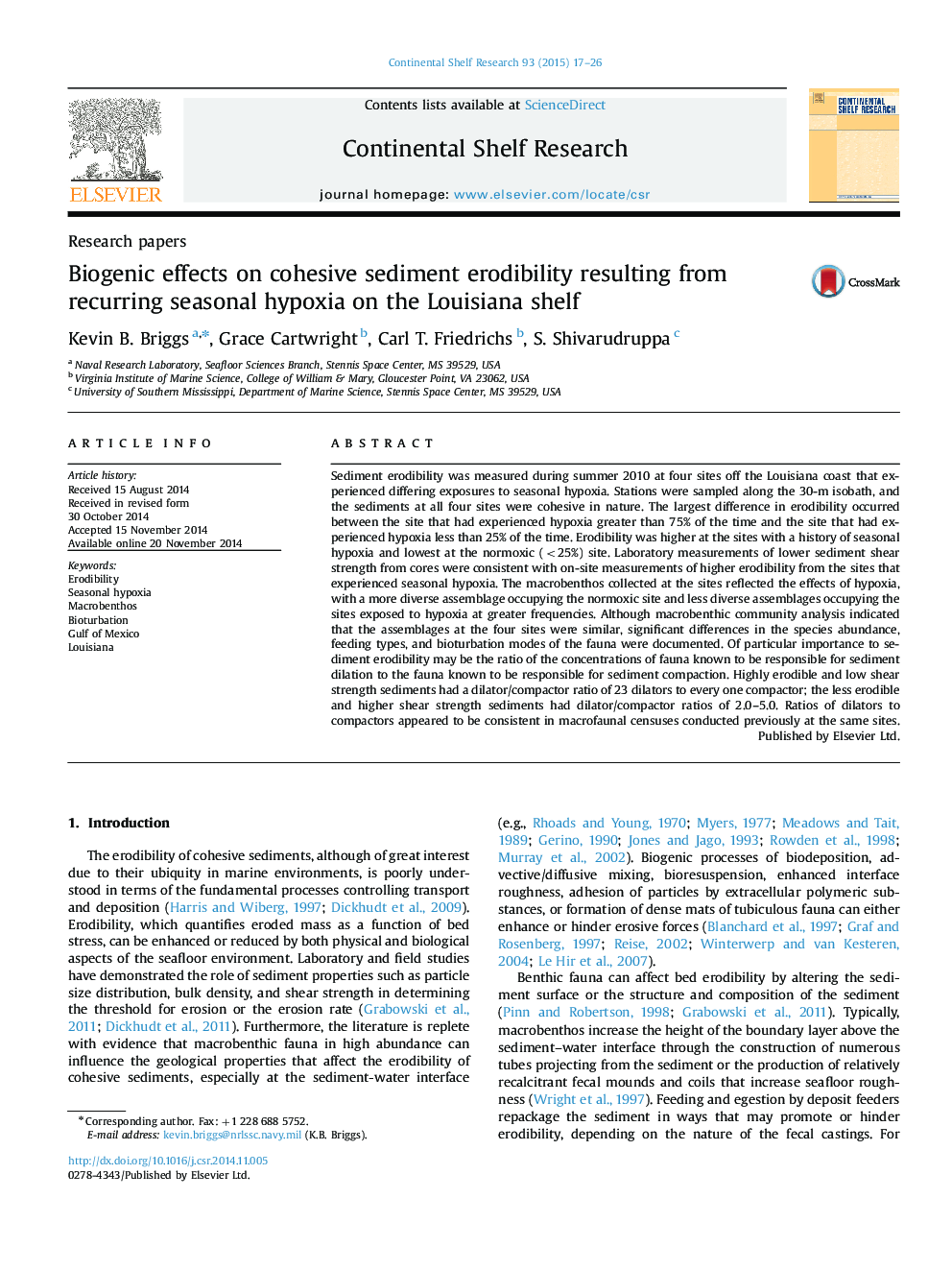| Article ID | Journal | Published Year | Pages | File Type |
|---|---|---|---|---|
| 4531768 | Continental Shelf Research | 2015 | 10 Pages |
•High ratio of dilators/compactors due to hypoxia decreases the shear strength of muds.•Less diverse macrobenthos feeding types following hypoxia de-stabilizes sediments.•Differences in macrobenthos feeding guilds persist following previous hypoxia seasons.
Sediment erodibility was measured during summer 2010 at four sites off the Louisiana coast that experienced differing exposures to seasonal hypoxia. Stations were sampled along the 30-m isobath, and the sediments at all four sites were cohesive in nature. The largest difference in erodibility occurred between the site that had experienced hypoxia greater than 75% of the time and the site that had experienced hypoxia less than 25% of the time. Erodibility was higher at the sites with a history of seasonal hypoxia and lowest at the normoxic (<25%) site. Laboratory measurements of lower sediment shear strength from cores were consistent with on-site measurements of higher erodibility from the sites that experienced seasonal hypoxia. The macrobenthos collected at the sites reflected the effects of hypoxia, with a more diverse assemblage occupying the normoxic site and less diverse assemblages occupying the sites exposed to hypoxia at greater frequencies. Although macrobenthic community analysis indicated that the assemblages at the four sites were similar, significant differences in the species abundance, feeding types, and bioturbation modes of the fauna were documented. Of particular importance to sediment erodibility may be the ratio of the concentrations of fauna known to be responsible for sediment dilation to the fauna known to be responsible for sediment compaction. Highly erodible and low shear strength sediments had a dilator/compactor ratio of 23 dilators to every one compactor; the less erodible and higher shear strength sediments had dilator/compactor ratios of 2.0–5.0. Ratios of dilators to compactors appeared to be consistent in macrofaunal censuses conducted previously at the same sites.
